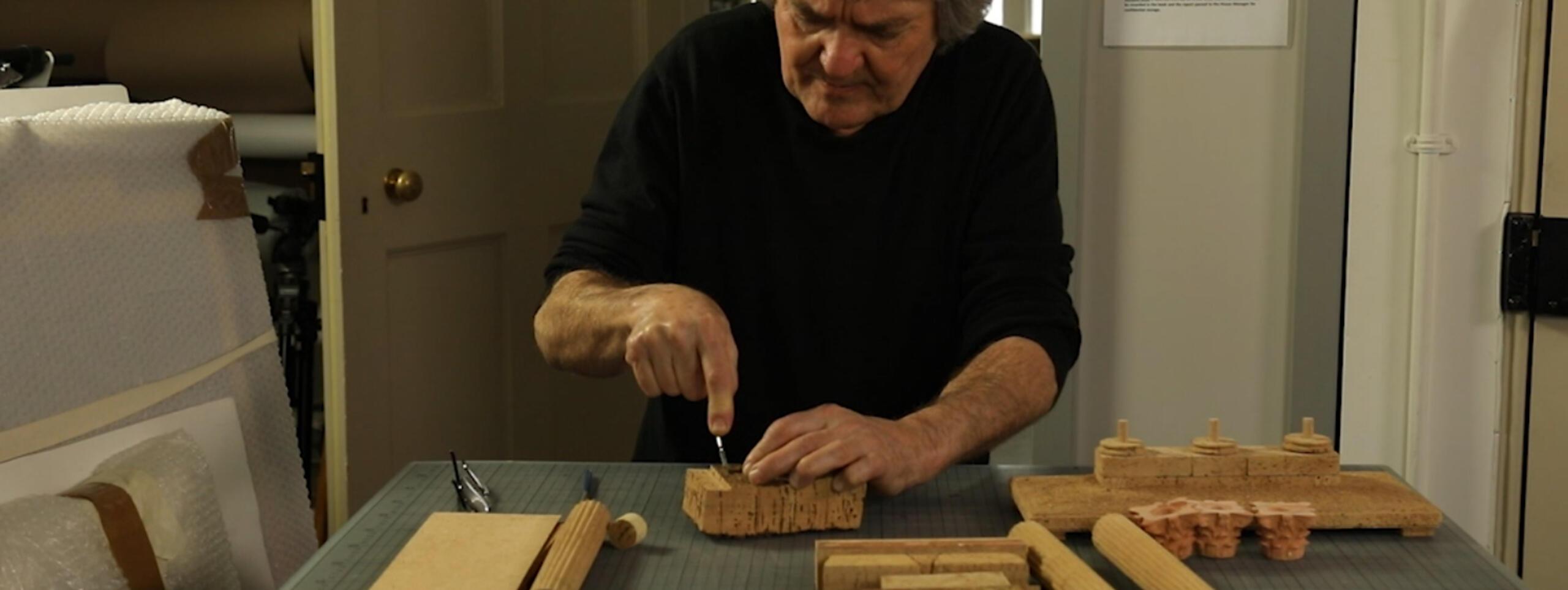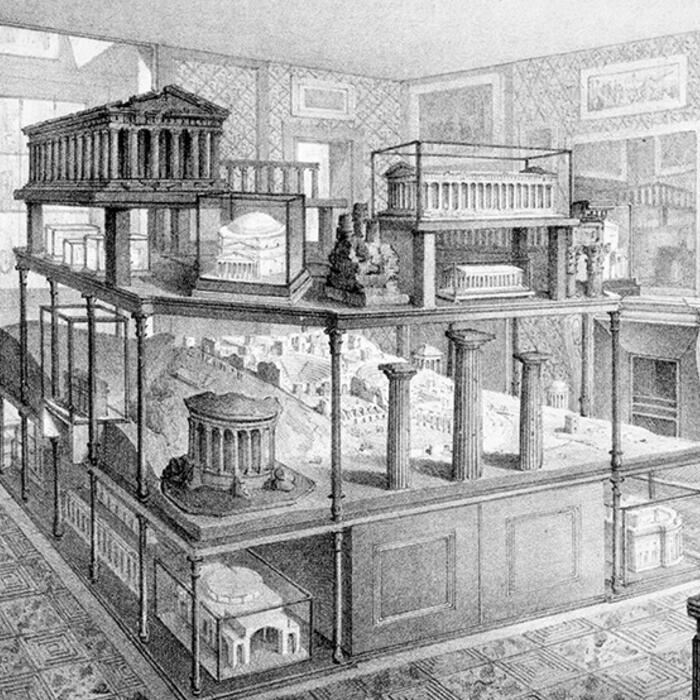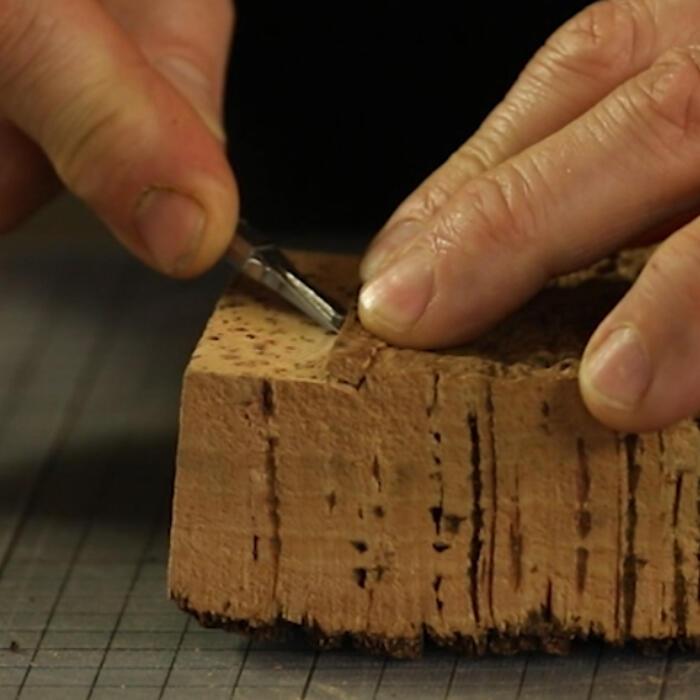When visiting the Private Apartments today, one of the most striking objects is a huge cork model of the ruins of Pompeii, in the centre of the Model Room. This was partly recreated by the artist Dieter Coellen during Opening Up The Soane.
The recreation of the Model Room enables us to see once more the way that Soane displayed models for his own architectural projects juxtaposed with models of the great ruins of the architectural masterpieces of ancient Greece and Rome. This is exemplified by the restoration of the display of models on the great Pompeii model stand placed in the centre of the room.
This three-tier stand was commissioned by Soane in 1826 to display a cork model of Pompeii (as it looked in 1820) purchased at Christie’s, along with other cork models, at the sale of the effects of his pupil, John Sanders, who had recently died.
Some years after Soane’s death his Model Room was dismantled and the large stand was displaced, becoming a kind of peripatetic intruder into other Museum interiors. In the early 1890s James Wild (the Curator) decided to re-make the stand, reducing it to about half its original size. The model of Pompeii (about six feet square) was cut down to enable it to fit the remodelled stand – removing the half with fewer architectural features. This no longer survives – presumably he disposed of it.
Researching how the model would have looked Back to top
Restoring the stand to its original size required the recreation of the lost part of the Pompeii model, in cork on a timber base. There was just one man in the world still producing high-quality cork models exactly like those produced for the Grand Tourists of the 18th century – Dieter Coellen, based in Germany.
However, the Museum needed not only someone skilled in the lost art of cork model-making but also someone to provide the necessary information about precisely what should be modelled. A detailed engraving of the Model Room from c.1835 provided a starting point, along with two plans of Pompeii in 1820 that Soane acquired with the model, but the Museum team brought in Professor Valentin Kockel, one of the world’s foremost experts on cork models but also, by great good fortune, an archaeologist based in Germany who has spent many years studying and working at Pompeii, Dieter. The two worked together on the detailed design for the new half of the model to ensure that it was as accurate and close to Soane’s original as possible.
Making the cork model Back to top
The making of a cork model begins with a solid cork block, the bark from a cork oak tree, which on the outer side is pitted with holes (this is the part from which corks for wine bottles are cut) but which on the inner side is much denser and smoother.
This inner part, which Dieter calls ‘the filet’, is very fine, almost like leather, and is the part primarily used for modelling. Working with it requires very sharp tools and great skill but it is easy to cut with fine tools, as Dieter demonstrates. It took him one year to make the missing half of the cork model basing some of the details, such as tiny columns, on moulds taken from surviving originals.
As Dieter explains in the film every ancient ruin has its own emotional character and cork can beautifully express this making the viewer feel almost as if they are viewing the ruin itself. When the model was finished and installed next to the original section even Dieter was surprised by its power and the extraordinary way in which the new part blends with the old to produce the final model, looking exactly as it did in Soane’s lifetime.
You can find out more about Dieter's work on his website.


